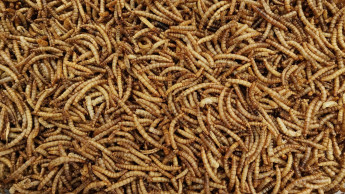to unveil the basic features of its “feline health nutrition” concept to them. At the same time, the company presented some interesting background material and scienti-fic findings regarding the needs of cats, the most po-pular pet in many countries. This extremely interesting information seminar was rounded off by a tour of the production plant and the large cat facility in Aimargues.
Royal Canin’s headquarters in Aimargues, in the south of France.
During the numerous talks by Royal Canin staff, reference was made repeatedly to the fact that up to 40 per cent of all cats are now overweight. Possible reasons for this, according to the scientists from Royal Canin, were food that was too energy-rich and too little exercise in the case of house cats.
Dr Fabienne Dethioux from the company’s R&D department reminded the audience that cats originally used to eat 10 to 15 mice per day, each of which contained no more than 30 kcal. To get the food, however, the cat first had to catch the mice, which called for considerable exertion and lots of activity. House cats, which are kept predominantly in the home, have a much easier life. They are fed – and more often than not fed far too much. They don’t get the exercise that burns up the excess calories, which is why diseases like diabetes and kidney stones are on the increase, say the scientists. The risk of contracting diabetes grows in cats especially beyond the age of seven, with tomcats being particularly prone to the disease.
Another aspect that Fabienne Dethioux particularly mentioned was the increased intake of food by a cat following castration or spaying. Here there are marked differences between male and female cats. In females the average intake of food increases more sharply immediately following spaying/castration than in males (30.1 per cent compared with 23.8 per cent). This behaviour wears off again up to three months after spaying, whereas in males the food intake even continues to increase (to 26 per cent compared with 17 per cent for females).
With their informative talks Fabienne Dethioux (left) and Pascale Pibot increased their audience’s understanding of cats.
Pascale Pibot, a member of the communications department at Royal Canin, described the requirements in respect of the palatability (tastiness) of cat food. This differs quite considerably depending on the type of…

 Menü
Menü







 9-10/2005
9-10/2005












 Newsletter
Newsletter